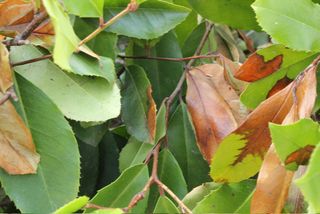The Dry Garden: 275 lawns down, 79,725 to go in Long Beach
Posted on | October 8, 2010 | No Comments
Plaudits, not sprinklers, were flowing this week when the Heal the Bay president, a Surfrider Foundation policy director, a vice mayor and water company general manager gathered in the garden of a Long Beach handyman to ooh and aah over the salvia.
They were there to praise citizens of Long Beach who embraced the first of two rounds of rebates — $2.50 per square foot lawn converted to low-water garden — that started in April. It stands to reason that clean-ocean advocates would appreciate how important it is to check the stream of pesticide and fertilizer pollution that runs into the Pacific from lawn-sprinkler overflow. But what has dazzled everyone familiar with the Beautiful Long Beach Lawn-to-Garden Incentive Program is how citizens of this beach city have been so ready to do their part. The first day that the Long Beach Water Department began accepting applications, conservation specialist Joyce Barkley (pictured left) said, “They were gone in 45 minutes.” Click here to keep reading about the City of Long Beach’s war on turf in this week’s ‘The Dry Garden’ column in the Los Angeles Times.
A decade of change
Posted on | October 7, 2010 | 3 Comments
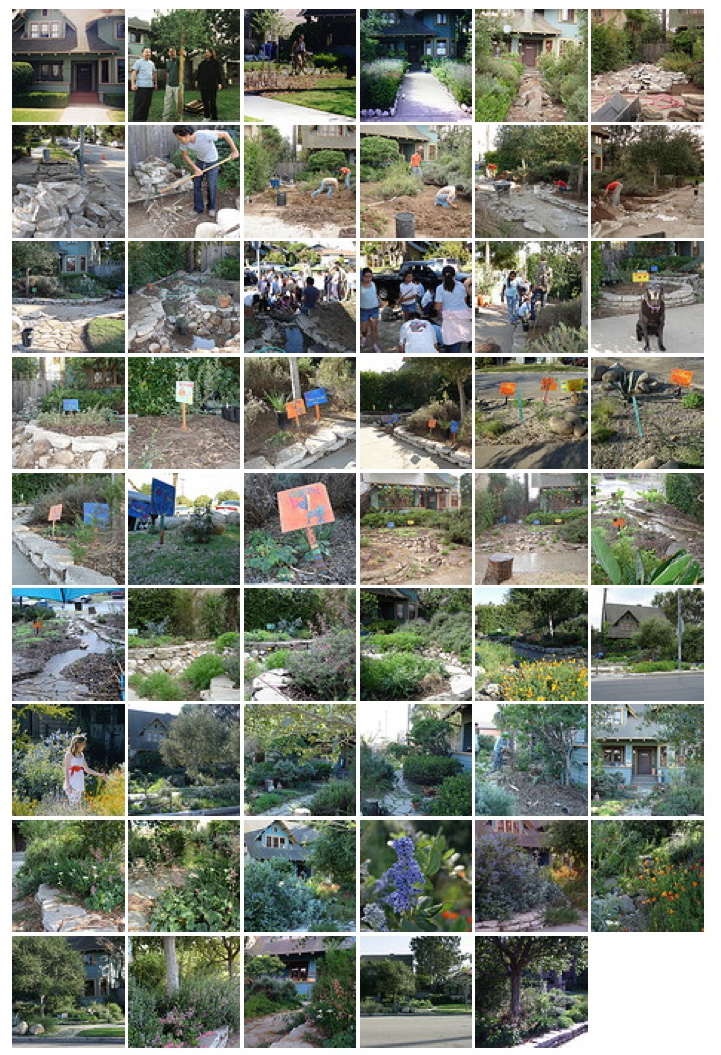 I had the honor this week of being a guest speaker before both the California Native Plant Society and Lili Singer’s Garden Talk audience at the Los Angeles County Arboretum and Botanic Garden. The subject: A decade of gardening, during which time I took my 8,000 square foot lot near downtown Los Angeles from a conventional turf & mow model to a Mediterranean climate/native garden that runs largely on local rainfall and sees power tools only every two years during pruning season. This photo essay captures that progression. My apologies to the CNPS audience, who last Sunday endured a PowerPoint failure. Here, belatedly, are the images. My thanks to Steve Hartman of CNPS, Lili Singer of the Theodore Payne Foundation and Jill Berry, Ted Tegart and Cynthia Vargas of the Arboretum for challenging me to put together this photo diary, then helping it come together. To see the full photo essay, with captions, on Flickr, click here. Behind these photos are a decade’s worth of columns for the Los Angeles Times on gardening and water conservation. To find those articles, click here. Finally, my everlasting thanks to the LA Times editor Jon Thurber for suggesting that I write about a garden that he spotted forming early on, then editors Nancy Yoshihara, Barbara King, Michalene Busico and Craig Nakano, all of whom took a flier in the belief that publishing articles that wouldn’t syndicate because of our unique climate was still an important civic duty. And, hopefully, a good read. At the suggestion of a sharp-eyed reader (comment below), I’m adding this link to the Times article that explains the water-trapping process shown in this photo essay.
I had the honor this week of being a guest speaker before both the California Native Plant Society and Lili Singer’s Garden Talk audience at the Los Angeles County Arboretum and Botanic Garden. The subject: A decade of gardening, during which time I took my 8,000 square foot lot near downtown Los Angeles from a conventional turf & mow model to a Mediterranean climate/native garden that runs largely on local rainfall and sees power tools only every two years during pruning season. This photo essay captures that progression. My apologies to the CNPS audience, who last Sunday endured a PowerPoint failure. Here, belatedly, are the images. My thanks to Steve Hartman of CNPS, Lili Singer of the Theodore Payne Foundation and Jill Berry, Ted Tegart and Cynthia Vargas of the Arboretum for challenging me to put together this photo diary, then helping it come together. To see the full photo essay, with captions, on Flickr, click here. Behind these photos are a decade’s worth of columns for the Los Angeles Times on gardening and water conservation. To find those articles, click here. Finally, my everlasting thanks to the LA Times editor Jon Thurber for suggesting that I write about a garden that he spotted forming early on, then editors Nancy Yoshihara, Barbara King, Michalene Busico and Craig Nakano, all of whom took a flier in the belief that publishing articles that wouldn’t syndicate because of our unique climate was still an important civic duty. And, hopefully, a good read. At the suggestion of a sharp-eyed reader (comment below), I’m adding this link to the Times article that explains the water-trapping process shown in this photo essay.
The week that was, 9/26-10/2/2010
Posted on | October 2, 2010 | 1 Comment
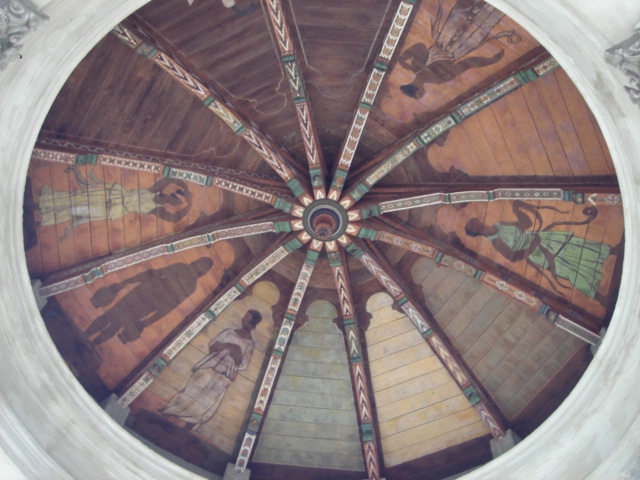
Ceiling of the Sunol Water Temple in Sunol, California. Designed by Willis Polk, the temple marks the convergence the Alameda Creek, Arroyo de la Laguna and the Pleasanton Well Fields. Click on the image for a Contra Costa Times account of its centennial last weekend. Image source: Wikipedia.
The Tribal Council on Wednesday tabled a bill that would have given the tribe 31,000 acre-feet of water a year from the Colorado River, the un-appropriated surface flows from the Little Colorado River and nearly unlimited access to two aquifers beneath the reservation. — Navajo lawmakers table proposed water settlement, Associated Press/Arizona Capitol Times, September 30, 2010
“I urge the Senate to pass S.2891, the Hoover Dam Power Allocation Act, which reauthorizes the dam for the next 50 years and expands access to its power to Native Americans and other previously excluded groups.” — Press release, Grace Napolitano commemorates 75th anniversary of Hoover Dam, September 28, 2010
“Put enough agreements on top of it that it becomes meaningless.” — Southern Nevada Water Authority general manager Pat Mulroy on her new strategy to get around inequities inherent in the Colorado Compact, Las Vegas’ worried water czar, New York Times, September 28, 2010
“This morning I came, I saw and I was conquered …” “…enough water, for example, to cover the whole State of Connecticut to a depth of ten feet …” “Salinity, sedimentation, pesticide contamination, diminishing hopes of replenishment, the dangers of aging, collapsing dame…” — Hoover Dam quotations, UC Berkeley
Native plants, native water
Posted on | October 2, 2010 | 2 Comments
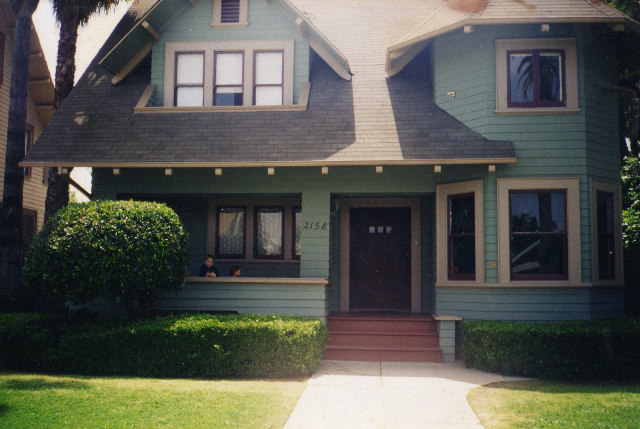
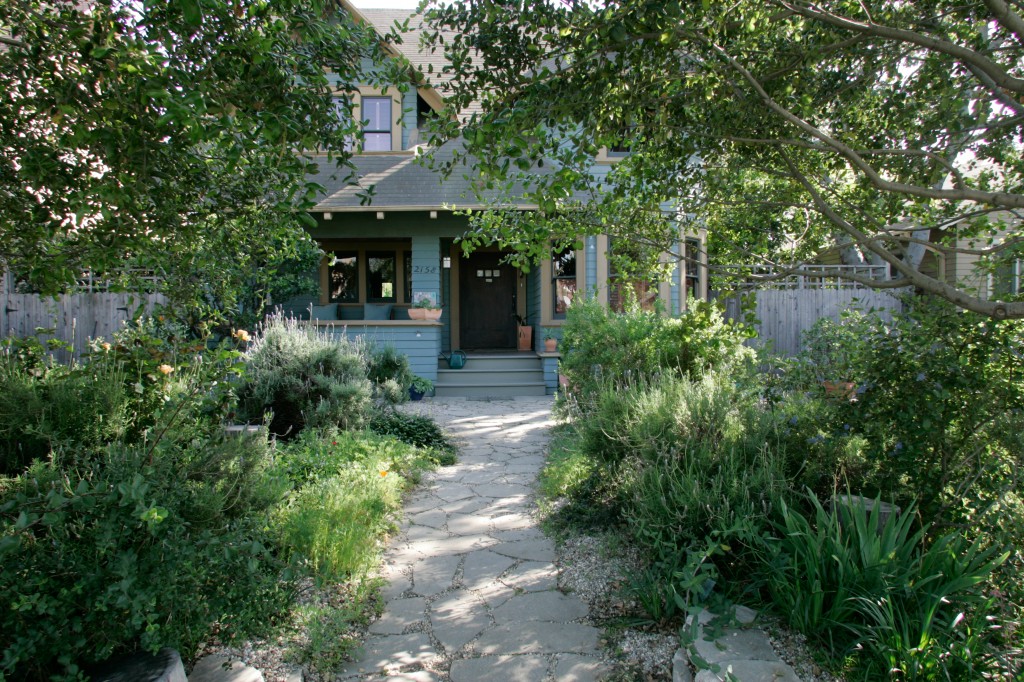 I will be presenting slide shows this coming week, tomorrow at 12noon at the California Native Plant Society’s Sale in Encino and Thursday at 9.30am as Lili Singer’s guest at the Los Angeles County Arboretum and Botanic Garden in Arcadia, about the conversion from a conventional garden (above) to a largely native one (below). The upshot was a massive increase in shade and wildlife value, elimination of storm water run-off and steep decrease in maintenance fees and water use. Judge for yourself as to beauty. For details about tomorrow’s talk, click here, for Thursday’s here. Click on photos to enlarge.
I will be presenting slide shows this coming week, tomorrow at 12noon at the California Native Plant Society’s Sale in Encino and Thursday at 9.30am as Lili Singer’s guest at the Los Angeles County Arboretum and Botanic Garden in Arcadia, about the conversion from a conventional garden (above) to a largely native one (below). The upshot was a massive increase in shade and wildlife value, elimination of storm water run-off and steep decrease in maintenance fees and water use. Judge for yourself as to beauty. For details about tomorrow’s talk, click here, for Thursday’s here. Click on photos to enlarge.
The Dry Garden: Not cool
Posted on | October 1, 2010 | No Comments
The most common mistake bruited about Los Angeles is that it’s in a desert. It’s not. It’s in one of five of the world’s Mediterranean climate zones, which means that it has a largely temperate but dry climate with winter rain and rainless summers. That said, last Monday, we got a taste of what really living in a desert is like. Santa Ana winds out of the high desert of the Great Basin drove temperatures to 113F in downtown Los Angeles. If your garden wasn’t stressed, you probably don’t have one. Click here for this week’s Dry Garden column in the LA Times on how to irrigate in Southern California during the October-December Santa Ana season.
« go back — keep looking »

